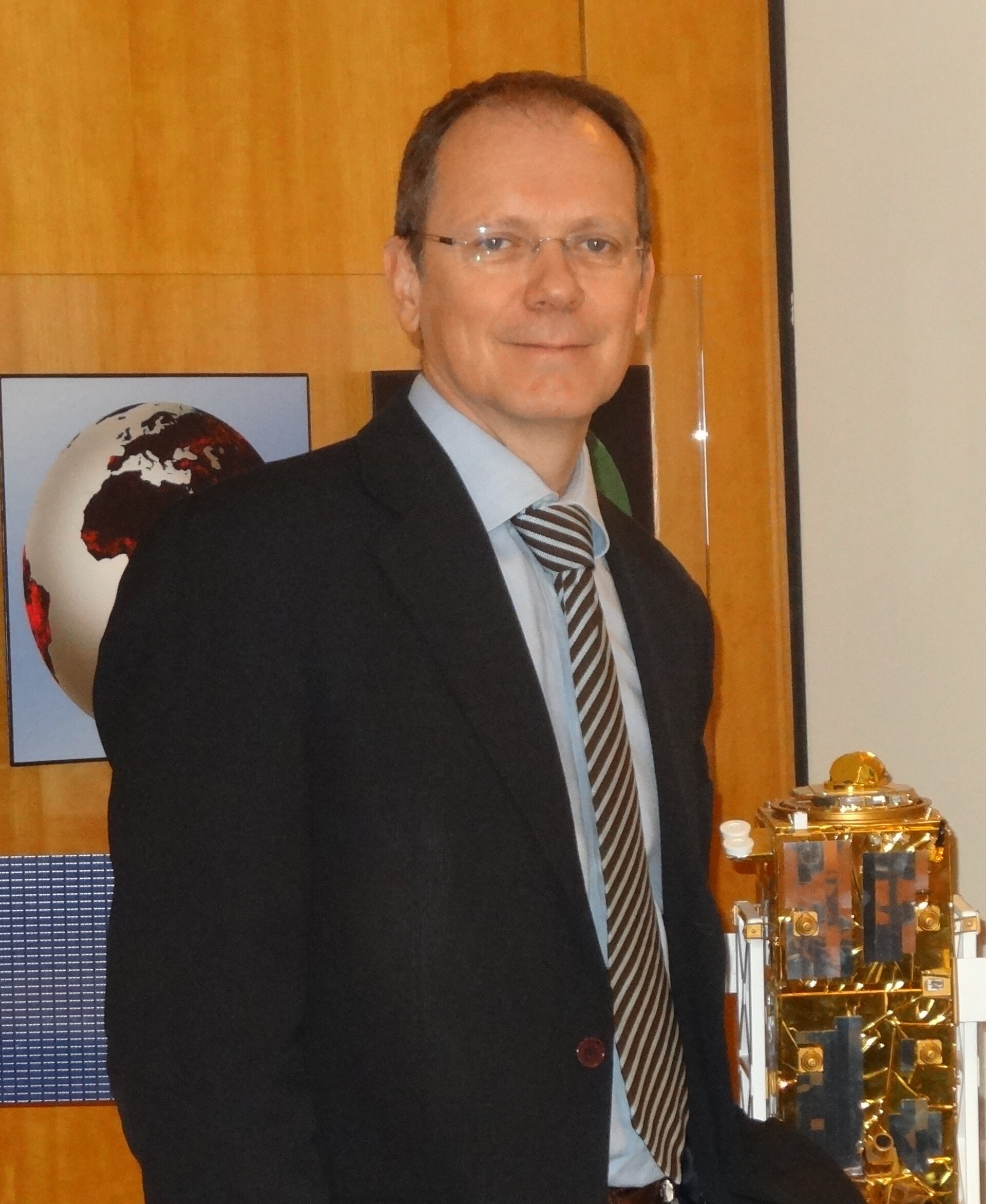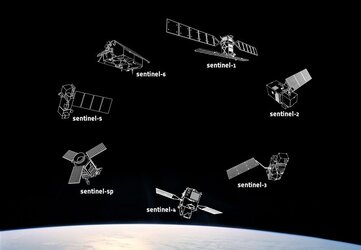Pierre Potin: Mission Manager
In his role as Sentinel-1 Mission Manager, Pierre Potin will be responsible for the Sentinel-1 satellites once they enter their exploitation phase, after completion of the satellite commissioning phase.

Pierre, a French national, began working at ESA’s Centre for Earth Observation (ESRIN) in Italy about 20 years ago, where he developed a strong base in satellite Earth observation. He was heavily involved in the Envisat mission, on various activities, as part of the ground segment team and with the mission management office.
Subsequently, he worked on GMES/Copernicus programmatic matters for three years, before taking the responsibility of Sentinel-1 Mission Manager in 2010. Prior to working for ESA, Pierre spent three years in industry and was involved in meteorological programmes for ESA, mainly Meteosat Second Generation.
Pierre holds a degree in Engineering from Ecole Française d’Electronique et d’Informatique and a Master’s degree in Space Systems from Ecole Nationale Supérieure des Télécommunications, both in France.
ESA: What will your role as Sentinel-1 Mission Manager involve?
Pierre Potin
My role will focus on managing the exploitation phase of both Sentinel-1A and Sentinel-1B through the coordination and management of tasks delegated to other ESA departments and directorates. In particular, this includes ESOC in Germany for the flight operations segment, ESTEC in the Netherlands for post-launch support activities (liaising in particular with the industrial manufacturer of the satellite) and ESRIN in Italy for the payload data ground segment.
Another important part of my job involves interfacing with the ‘external world’ for mission aspects and, in particular, with the Copernicus services, ESA Member States representatives, international partners and the large user community in general. The objective is to encourage the broad use of Sentinel-1 data, capture user needs and new requirements and promote the mission in new application and scientific domains. The Mission Manager is the formal ESA representative for the mission.
Reporting on the Sentinel-1 mission to the European Commission and our Member States is another task that I will ensure on a regular basis.
ESA: What are you most looking forward to with Sentinel-1?
Pierre Potin
The great interest and the ‘power’ of the Sentinel-1 mission is the large variety of thematic domains it can address, supporting many applications over land, seas and oceans, and polar areas; for emergency support in cases of disaster; and for contributing to our understanding climate change issues.
I’m really looking forward to seeing the first Sentinel-1 satellite in orbit and providing a continuous stream of data. We have many users keenly waiting for Sentinel-1 data for integration into their operational services, to support their scientific research and to enable new value-adding commercial services. Our international partners and the international initiatives in the framework of GEO–GEOSS, for example, are also looking forward to receiving Sentinel-1 data.
ESA: Once both Sentinel-1A and -1B are launched, the mission will provide frequent radar imagery of the entire globe. Who will be the main users of these data?
Pierre Potin
With their technical capabilities, the Sentinel-1 satellites will open a new era in radar imaging. Large-scale mapping is key for the well-known SAR-based operational services such as sea-ice and iceberg monitoring, oil slick detection, wind/wave/current monitoring, and maritime surveillance in general.
As well as these services, Sentinel-1 will support a number of applications over land, some that now are at the demonstration or pre-operational stage. With Sentinel-1, they will become fully operational thanks to the satellites’ revisiting and mapping capabilities. There is a multitude of users for these kind of data and products. Safety authorities can use this information to monitor the subsidence of cities and critical infrastructure such as bridges and dams, as well as for landslide risk assessments. Food security authorities, working nationally and globally, can use the data for crop monitoring, while governments can keep an eye on forest cover and deforestation. Information from Sentinel-1 can also be used by disaster management authorities to better mitigate flood events and related crisis situations, thanks to the potential set up of hydrological warning systems.
Scientists and researchers are also key users. Providing very frequent global observations of tectonic areas, Sentinel-1 will allow, for instance, to better understand earthquake processes worldwide by determining strain accumulation over tectonically active belts. Another example is the monitoring of the large ice sheets of Antarctica and Greenland, to better assess climate change issues and the impact on sea-level rise.
These are few examples of applications or scientific use, among many others.
ESA: What do you expect to be the biggest challenges for the two-satellite mission?
Pierre Potin
Systematically processing and delivering huge volumes of high-quality data in a timely fashion to a large number of users is certainly a challenge. Owing to the free and open Sentinel data policy we expect to attract many users worldwide. But the challenge is not only on our side: users who plan to make use of large datasets need to be prepared to handle big volumes of data. New technologies and initiatives like cloud computing and ‘exploitation platforms’ should ease the use of Sentinel data.
Another challenge is to make the best use of these fantastic satellites, ensuring that the mission satisfies the needs of the various services and users. The definition and implementation of optimised satellite observation plans are particularly important. We shall also anticipate and adapt the mission exploitation and ground segment operations scenarios as needs continue to evolve, keeping in mind the objectives of the mission. New Copernicus initiatives, at European and potentially global scales, relying heavily on Sentinel-1 data are expected to develop.
Editor's note:
This is one in a series of interviews with a few of the key people that are involved in the Sentinel-1 mission. Please check back as the list will be added to over the coming weeks.






